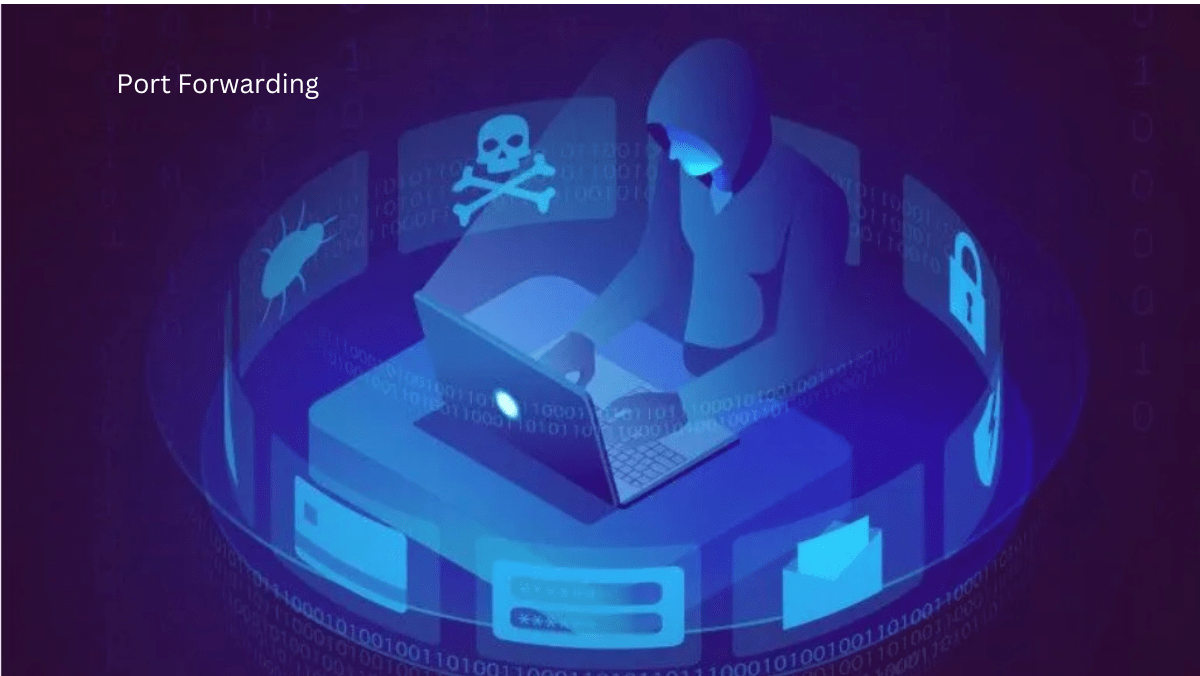
Port Forwarding Explained: A Beginner’s Guide

If you’re new to hosting a website or settings, you might have come across the term port forwarding. It sounds a little technical, but don’t worry! In this blog, we’ll break it down in simple terms, explain how it works, and why it’s so important in hosting.
What is port Forwarding?

Imagine you live in a house (your computer or server) that is part of a neighborhood (your local network). Your house has a unique address (your IP address) that helps others find you in the neighborhood. However, there’s a problem: only the front gate (your route) knows how to direct people to the right house.
In this analogy, port forwarding is like giving the front gate (your route) specific instructions on how to direct people to the right room (a service or application on your computer). In the case of a website, the front gate needs to know that when someone knocks on your door (accessing your public IP address), they should be sent to the right room (your web server).
How Does Port Forwarding Work?

To make it simpler, here’s an easy-to follow breakdown:
- Route and IP Address:
- Your route is like a gatekeeper. It has a public IP address, which is the address people outside your home use to find you.
- Inside your home (your network), your computer or server has a private IP address that can’t be seen by people outside.
- The problem:
- When someone from the outside world (like a person trying to visit your website) tries to connect to your public IP address (the gate), they don’t know which specific device inside your home to send the request to. This is because all the devices inside are hidden behind the router.
- The Solution (Port Forwarding):
- Port forwarding is like telling the gatekeeper (route) exactly where to send people. For example, if someone is trying to visit your website, you tell the route, “Send them directly to the web server inside the house, on port 80.”
- Port 80 is the standard port used for web traffic, so it’s the perfect destination for web requests.
- The journey of the Request:
- he person outside (the website visitor) enters your public IP address or domain name.
- The request first hits route (the gate), which then checks its port forwarding settings to see if there’s a rule for that particular request.
- If there’s a match, the route forwards the request to the correct internal device. In this case, the router forwards it to the web server on port 80.
- The web server processes the request, and the information (like your website) is sent back through the router and returned to the visitor.
Why is Port Forwarding Important in Hosting?
When you host a website or any other service, port forwarding plays a crucial role in making your server accessible from the outside world. Without it, external devices wouldn’t know how to find your server behind the router.
Here’s why port forwarding is essential:
- Enabling External Access:
Whether you’re hosting a website, game server, or FTP server, port forwarding makes sure that requests from users outside your network can reach the correct device or service inside your network. - Better Control Over Your Network:
Port forwarding allows you to specify which devices or services can be accessed from the outside. You can create rules to forward only the necessary traffic (like web traffic on port 80 or 443) and keep other services hidden for security. - Performance Optimization:
By managing traffic to the right ports, you ensure that the server resources are used efficiently, and the correct services are delivered to the user.
Common Use Cases for Port Forwarding

https://blog.vcclhosting.com/seamless-hosting-migration-to-vcclhosting/: Port Forwarding Explained: A Beginner’s Guide
- Web Hosting:
If you’re running a website from your own server, port forwarding ensures when someone enters your domain name IP address, the request gets directed your server. - Game Hosting:
If you’re hosting a game server (like Minecraft or other online multiplayer games), port forwarding allows players to connect to your server by forwarding the game-specific ports to your internal device. - Remote Access:
Port forwarding can also be used to access services like your computer, file server, or even a security camera system remotely, allowing you to control them from anywhere in the world.
Security Considerations

While port forwarding is essential for enabling external access to your services, it’s important to keep security in mind:
- Limit the Number of Open Ports:
Only open the ports you need. The more ports you forward, the more entry points there are into your network, which increase the chances of an attack.
- Use Strong Security Measures:
Make sure any service exposed via port forwarding (like a web server or remote desktop) is properly secured. This includes using strong passwords, encryption, and firewalls.
- Monitor and Update Regularly:
Keep your router’s firmware and your internal servers up to date. Regularly review port forwarding settings to ensure everything is secure.
Conclusion

Port forwarding might sound like a complicated concept at first, but once you understand it, it’s a straightforward and essential part of hosting services like websites or game server, the router knows exactly where to send them, helping you deliver your services to the outside world.
So, whether you’re hosting a website or simply trying to connect to your home network remotely, port forwarding is a tool you’ll definitely need to understand. Just remember to understand. Just remember to use it wisely and securely!
Read related blog post
https://blog.vcclhosting.com/seamless-hosting-migration-to-vcclhosting/: Port Forwarding Explained: A Beginner’s Guide







